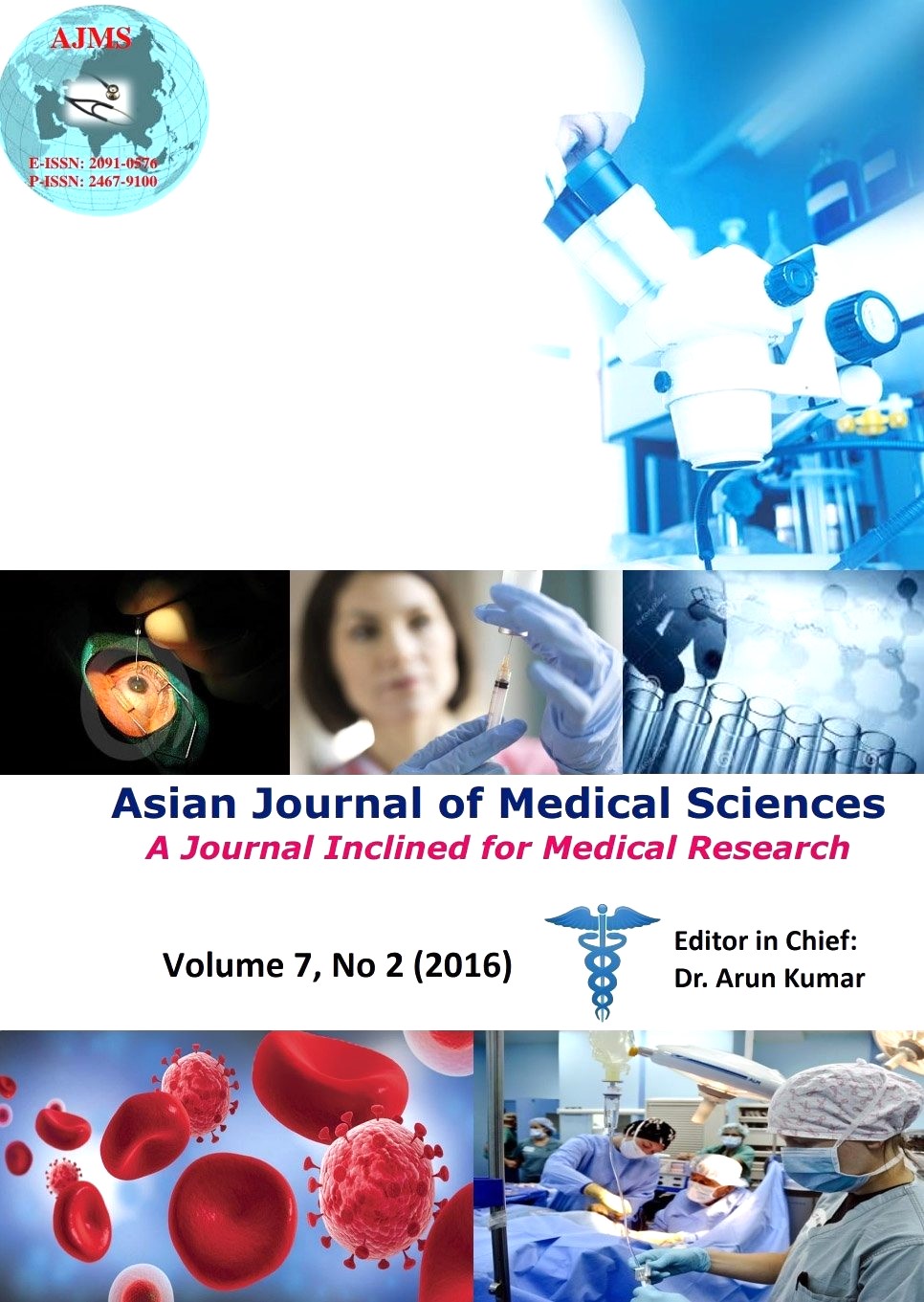Filum terminale paraganglioma a diagnostic dilemmas- A case report
Keywords:
Paraganglioma, Filum Terminale, Cauda equina, Zell-ballen patternAbstract
Filum terminale paraganglioma is a rare tumour with usual short segment spinal involvement (one or two segments) as described in various literatures. It can also present with long segment spinal involvement as in our case, the tumour has involved L4 to S1 segments. Prognosis of filum terminale paraganglioma is excellent after total excision as it is classified under WHO grade I tumor. Nonetheless, after subtotal removal, tumour recurrence can occur. Even such an extremely rare entity with a larger spectrum of presentation can be treated successfully by total removal of the tumour. Here we present a fi lum terminale paraganglioma which was diagnosed after histopathology and immuno-histochemistry. Patient made a full recovery after tumour removal.
Asian Journal of Medical Sciences Vol.7(2) 2015 104-106
Downloads
Downloads
Additional Files
Published
How to Cite
Issue
Section
License
Authors who publish with this journal agree to the following terms:
- The journal holds copyright and publishes the work under a Creative Commons CC-BY-NC license that permits use, distribution and reprduction in any medium, provided the original work is properly cited and is not used for commercial purposes. The journal should be recognised as the original publisher of this work.
- Authors are able to enter into separate, additional contractual arrangements for the non-exclusive distribution of the journal's published version of the work (e.g., post it to an institutional repository or publish it in a book), with an acknowledgement of its initial publication in this journal.
- Authors are permitted and encouraged to post their work online (e.g., in institutional repositories or on their website) prior to and during the submission process, as it can lead to productive exchanges, as well as earlier and greater citation of published work (See The Effect of Open Access).




